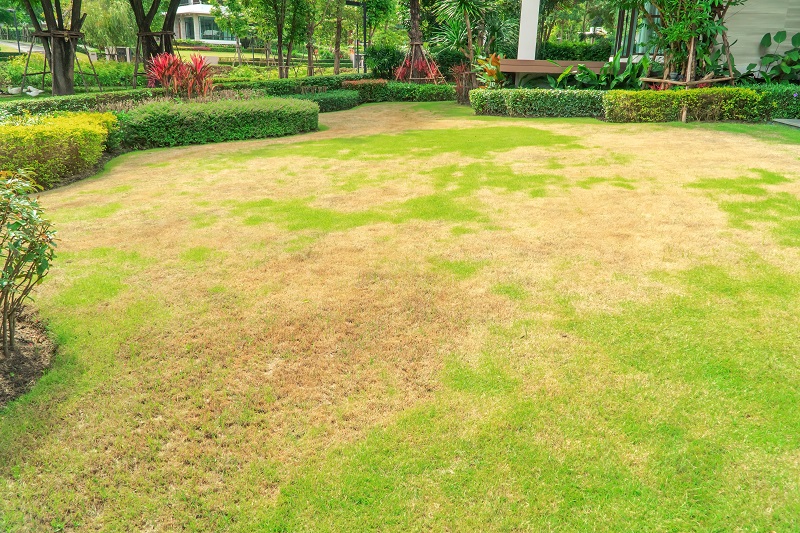Drought Damage or Chinch Bugs? This Easy Test will Help you Know
The dreaded chinch bug overwinters in your soil and reproduces in spring. Each female can lay up to 500 eggs, which can then turn your lawn into a smorgasbord. Although chinch bugs are less than 1/6 inch long, they have quite an appetite, and can quickly destroy any patch of grass in their paths.
These insects often leave what appears to be drought damage, so how can you know if you have chinch bugs? Here is a surefire way to tell.

Tin Can Test
For this test, use a metal can, (such as a coffee can), that is open on either end. Sink the can a few inches into the soil and then fill with water. Continue adding water to maintain the level. After a few minutes, gently stir the soil just underneath the can.
If you have chinch bugs, you will see them floating to the surface. You can identify them by their black body, opaque wings, and yellow or red abdomens. The nymphs will be similar in appearance, but will not have any wings.
Count the number of bugs that rise to the surface. If you have at least 15, you have a moderate infestation. Between 20 and 30 indicate you have a more serious problem. In either case, professional treatment is recommended to eliminate your bug issue.
Treating Chinch Bugs
Treating these pests begins with thatching to remove as much dead matter as possible. This ensures that the insecticide can more easily reach your grass. Thatching itself may eliminate some chinch bugs, as these insects enjoy making their homes in thatch.
After thatching, careful application of insecticide followed by a thorough watering will help put these pests on the run. Don’t let chinch bugs take over your yard, when we can help you eradicate these pests. Please contact us today at Abracadabra to find out more.
